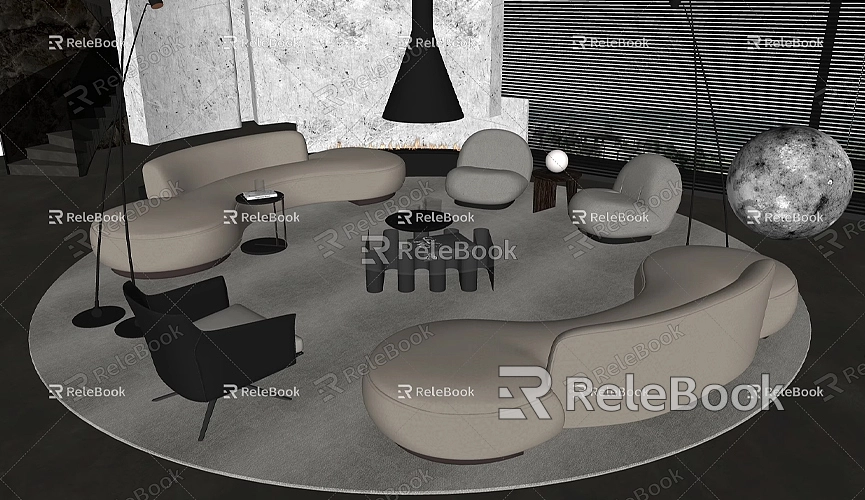How to Compress a Model in SketchUp
When working with 3D modeling in SketchUp, you may encounter issues with large model file sizes and slow operations, especially as projects become complex or require numerous details. To ensure a smooth workflow and manageable files, compressing SketchUp models is a crucial step. This article will detail how to effectively reduce model file size for a better user experience during operations and rendering.
Why Compress SketchUp Models?
Before diving into the process, it's essential to understand the need for compressing SketchUp models. Larger model files slow down opening, saving, and rendering speeds, particularly during real-time editing, which can hinder the entire workflow. Additionally, large files consume more storage space, making them inconvenient to transfer and share. If the model needs to be used in other software, like rendering engines or game engines, oversized files can affect import and loading times. Therefore, appropriately compressing model files not only saves space but also enhances overall work efficiency.

Effective Methods for Compressing SketchUp Models
In SketchUp, several methods can help you reduce model file size. Here are some common and effective techniques:
Remove Unnecessary Geometry
During modeling, you may inadvertently create excess geometry by copying or importing unnecessary parts, which can bloat the file. Check for and delete unneeded elements using the Select tool to efficiently reduce file size. Hidden elements or temporarily unused geometry can be removed to lighten the model.
Additionally, you can use SketchUp's "Model Info" tool to view model statistics and identify which parts consume excessive resources for targeted optimization.
Use Components and Groups
When creating complex models, you often use repetitive elements, such as chairs or fixtures. To reduce file size, it’s recommended to convert these repeated elements into components. SketchUp components are independent objects that can be reused throughout the project without increasing file size with each copy. In contrast, simple "copy-paste" actions create more geometry and use more resources.
Using groups can also help manage models, but they do not save file size like components do. The advantage of components is that modifying one instance updates all instances, greatly simplifying the editing process.

Simplify High-Polygon Models
Sometimes, high-polygon models, such as imported furniture or decor, can consume significant storage space. While SketchUp's built-in tools cannot directly simplify polygons, you can utilize plugins like "Skimp" or "Transmutr" to automatically reduce polygon counts while maintaining the model's appearance.
If you prefer not to use plugins, you can manually simplify models by removing unnecessary curves and faces or replacing complex shapes with simpler geometries.
Clean Up Unused Materials and Components
Unused materials, components, and image textures can also take up considerable file space. You can eliminate these unnecessary elements using SketchUp’s built-in "Purge Unused" feature. In the "Window" menu, select "Model Info," then click on the "Statistics" tab and choose "Purge Unused." SketchUp will automatically remove all unused materials, components, and layers, significantly reducing file size.
Compress Textures and Images
Image and texture files within models can greatly increase file size. To compress the model, you can resize high-resolution texture images or replace them with lower-resolution versions. However, this may affect the final rendering quality, so you should decide on optimizations based on your specific needs. Supported image formats in SketchUp include JPG and PNG; you can resize images in external software before reimporting them into SketchUp.
If you need high-quality 3D textures and HDRIs for creating models and virtual scenes, you can download them for free from [Relebook](https://textures.relebook.com). For exquisite 3D models, check out [Relebook](https://3dmodels.relebook.com), which offers a large selection of quality resources. These resources allow you to choose different resolution textures based on your needs, avoiding unnecessary space waste.
Use Plugins to Optimize and Compress Models
Although SketchUp’s built-in features are useful, sometimes third-party plugins are needed for further optimization. These plugins can save you from many tedious manual tasks.
CleanUp³ Plugin
CleanUp³ is a practical plugin that helps you remove excess elements from your model, such as unnecessary lines, duplicate faces, and hidden geometry. After installing this plugin, you can clean your entire model with just a few clicks, significantly reducing file size and improving SketchUp's responsiveness.
Skimp Plugin
Skimp is a powerful plugin that helps simplify high-polygon models without significantly compromising quality. Whether importing complex external models or optimizing existing ones, Skimp handles the task effortlessly. By adjusting the polygon count, you can achieve a lighter model with minimal visual impact.
With this guide, you should now understand how to compress models in SketchUp effectively. Whether through removing unnecessary geometry, using components, simplifying high-polygon models, or purging unused materials, these methods can help reduce file sizes. Choosing the right optimization techniques not only makes your model files lighter but also enhances SketchUp's performance and user experience.
During your modeling process, if you encounter complex scenes or need more high-quality materials, consider utilizing external resources to improve your results. As mentioned earlier, for high-quality 3D textures and HDRIs, you can download them from [Relebook](https://textures.relebook.com). For exquisite 3D models, [Relebook](https://3dmodels.relebook.com) offers numerous quality resources. These assets can help you complete your modeling work more effectively, making your designs more professional and efficient.

